-
 Starting with specific art supplies needed this video documents how therapists, healthcare professionals and family members can replicate the TTAP Method® in your home. Viewers are guided into Step #2 (meditation) , Step #1 conversation and finally witness the power of creating and self esteem in step #4 (sculpture). The Method is structured to give multiple opportunities for reminiscing, communication, learning and accomplishment that is innately in the art experience. These lectures have been proven to be excellent resourses for use in Colleges, Universitisities and healthcare settings both nationally and internationally.
Starting with specific art supplies needed this video documents how therapists, healthcare professionals and family members can replicate the TTAP Method® in your home. Viewers are guided into Step #2 (meditation) , Step #1 conversation and finally witness the power of creating and self esteem in step #4 (sculpture). The Method is structured to give multiple opportunities for reminiscing, communication, learning and accomplishment that is innately in the art experience. These lectures have been proven to be excellent resourses for use in Colleges, Universitisities and healthcare settings both nationally and internationally. -
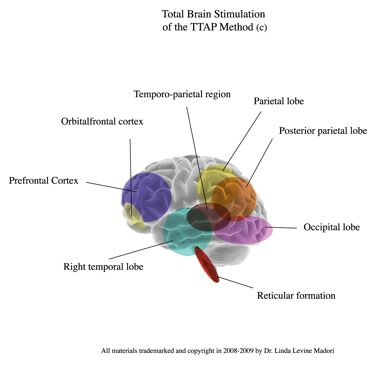 This 100 page book offers the reader the first of its kind that not only featuresTTAP Method Activity Protocols’ but also corresponds what areas of the brain are being stimulated through each of the now revised 12 step creative arts multimodalapproach. Each of the activity protocols’ include the specific supplies needed, the referral process, risk management, and a step by step structure for each TTAPMethod session conducted. The session protocols also include goals for the therapist/ activity staff and goals for the participant. This book is invaluable for the activity professional, the art or recreation therapist whether you are just entering the field or need new and fresh ideas.
This 100 page book offers the reader the first of its kind that not only featuresTTAP Method Activity Protocols’ but also corresponds what areas of the brain are being stimulated through each of the now revised 12 step creative arts multimodalapproach. Each of the activity protocols’ include the specific supplies needed, the referral process, risk management, and a step by step structure for each TTAPMethod session conducted. The session protocols also include goals for the therapist/ activity staff and goals for the participant. This book is invaluable for the activity professional, the art or recreation therapist whether you are just entering the field or need new and fresh ideas. -
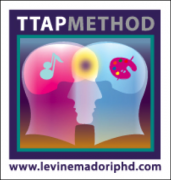 This workbook is an excellent resource for caregivers; easy to read overview on how activities positively effect cognition and brain resilience throughout the disease process. Additionally, this workbook outlines over 40 activities to stimulate the caregiver and the individual offering multiple opportunities reminiscing and positive interactive experiences. Sample Pages
This workbook is an excellent resource for caregivers; easy to read overview on how activities positively effect cognition and brain resilience throughout the disease process. Additionally, this workbook outlines over 40 activities to stimulate the caregiver and the individual offering multiple opportunities reminiscing and positive interactive experiences. Sample Pages -
 This workbook is an excellent resource for caregivers; easy to read overview on how activities positively effect cognition and brain resilience throughout the disease process. Additionally, this workbook outlines over 40 activities to stimulate the caregiver and the individual offering multiple opportunities reminiscing and positive interactive experiences. Sample Pages
This workbook is an excellent resource for caregivers; easy to read overview on how activities positively effect cognition and brain resilience throughout the disease process. Additionally, this workbook outlines over 40 activities to stimulate the caregiver and the individual offering multiple opportunities reminiscing and positive interactive experiences. Sample Pages -
 This educational film demonstrates how this multimodal approach directly effects different regions of the brain, thus promoting what we now know as Cognitive Reserve Theory. Learn how the participants felt after completing 10 out of 14 weeks of the TTAP Method® and hear what their family members thought of their social changes that occurred coming weekly to the therapeutic sessions. These lectures have been proven to be excellent resourses for use in Colleges, Universitisities and healthcare settings both nationally and internationally. https://www.youtube.com/watch?v=woe56ALoprQ
This educational film demonstrates how this multimodal approach directly effects different regions of the brain, thus promoting what we now know as Cognitive Reserve Theory. Learn how the participants felt after completing 10 out of 14 weeks of the TTAP Method® and hear what their family members thought of their social changes that occurred coming weekly to the therapeutic sessions. These lectures have been proven to be excellent resourses for use in Colleges, Universitisities and healthcare settings both nationally and internationally. https://www.youtube.com/watch?v=woe56ALoprQ -
 SPECIAL OFFER: Buy all 6 videos together and use coupon code "TTAP" to get all six for $100.00 Developmental Theories and how we age Person Centered theory Lifespan perspectives Life Review Object Relations theory and art, recreation and social work TTAP integrates Object relations Expressive Arts Neurodevelopmental Sequencing TTAP integrates Neurodevelopmental Sequencing TTAP integrates Theme centered Theory What is Gerotranscendence Learning Theories
SPECIAL OFFER: Buy all 6 videos together and use coupon code "TTAP" to get all six for $100.00 Developmental Theories and how we age Person Centered theory Lifespan perspectives Life Review Object Relations theory and art, recreation and social work TTAP integrates Object relations Expressive Arts Neurodevelopmental Sequencing TTAP integrates Neurodevelopmental Sequencing TTAP integrates Theme centered Theory What is Gerotranscendence Learning Theories -
 SPECIAL OFFER: Buy all 6 videos together and use coupon code "TTAP" to get all six for $100.00 Chapter 4: History of TTAP Method TTAP structures the 5 Psychological Domains TTAP Learning processes and Brain Functions TTAP structures Theme Centered Interactions TTAP provides Gerotranscendence experiences TTAP and the learning theories TTAP and Anderson’s and Krathwohls Taxonomy TTAP and enriched Language & Communication TTAP and Person Place Time Model TTAP 9 Steps and 12 Steps
SPECIAL OFFER: Buy all 6 videos together and use coupon code "TTAP" to get all six for $100.00 Chapter 4: History of TTAP Method TTAP structures the 5 Psychological Domains TTAP Learning processes and Brain Functions TTAP structures Theme Centered Interactions TTAP provides Gerotranscendence experiences TTAP and the learning theories TTAP and Anderson’s and Krathwohls Taxonomy TTAP and enriched Language & Communication TTAP and Person Place Time Model TTAP 9 Steps and 12 Steps -
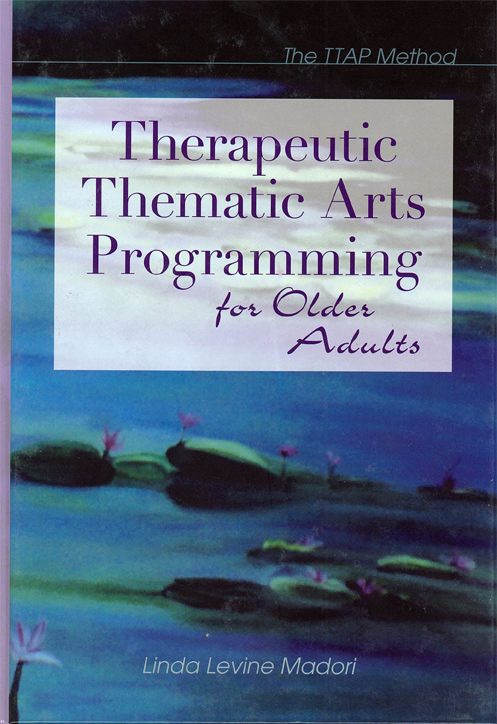 This innovative book is a 9-step methodology to actively engage older adults and help preserve their cognitive functioning using this innovative, integrative approach to therapeutic art. TherapeuticThematic Arts Programming (TTAP) Method will create an enriching valuable manual that effectively meets older adults’ cognitive, emotional, physical, and social needs. With Therapeutic Thematic Arts Programming, older adults explore a broad theme using a range of artistic expressions, including music, dance, poetry, sculpture, and photography. Stimulating multiple areas of brain functioning, the TTAP method promotes creativity and encourages participants to exercise their remaining strengths and abilities. The approach also increases social interaction with its focus on dynamic group interaction. The TTAP method provides structure to creative art therapies but also encourages flexibility and individualization. Appropriate for working with both well elders and those facing illness or disability, this integrative approach is solidly grounded in brain health research, biopsychology, and humanistic aging theories. Full of suggestions for themes and activities, for art and recreation therapists and for activity professionals. Its coverage of theories on aging and the benefits of creative art therapy also make it a useful text for students in the fields of therapeutic recreation and aging. Book Reviews: "This book brings together decades of innovation and current research in neurobiology to provide scientific grounding for recreational therapy. In addition, Dr. Levine Madori shares her insights and enthusiasm for The Therapeutic Thematic Arts Programming methods she has developed, refined, and tested in her extensive work with older adults." --Joan Hyde, Ph.D., Senior Fellow, Gerontology Institute University of Massachusetts and Chief Executive Officer Ivy Hall Senior Living The TTAP Method ™ highlights the concept that music can often stimulate memories in long-term storage where verbal conversation can fail. This seems to be behind her desire to mix art forms into the clearly delineated 9 steps of this methodology. This book, in its examination of the beneficial effects of creative therapy with elderly people and especially with those suffering from Alzheimer’s disease, adds to the growing body of knowledge that the arts connect the body and mind at any age. –Andrew Knights, Professor Trinity College of Music, London. Review in the Journal of International Psychogeriatrics, 2008 Boston "The underlying tenet of this book is that later life is a time for growth and development and, irrespective of one’s state of well-being, need not be devoid of opportunities for learning and celebration. The book is easy to engage with and a must for anyone using the creative arts in the field of therapeutic recreation." --Bevan C. Grant, Ph.D., Professor of Sport and Leisure Studies, University of Waikato, New Zealand "Inherent strengths of the publication include the author’s ability to share her expertise through numerous illustrations and examples; and the pedagogical features of the text – enumeration summaries of key points, figures support key narrative information, chapters are outlined and organized for quick reference and easy reading, and TTAP ideas are clearly presented and may be immediately incorporated into programming. The unique nature of the text is the presentation of creative arts with older adults – two minimized entities. Thus, this text fills a void in our professional literature as well as serving as a useful resource to several audiences." --Marcia Jean Carter, Re.D., CPRP, CTRS, Associate Professor, Western Illinois University, book review in The American Therapeutic Recreation Journal "Dr. Madori has provided a significant contribution both to the expressive arts therapy profession, as well as to the field of gerontology. Her perspective is based on a wellness model, a refreshing approach both to understanding the experience of aging and to the application of the expressive arts with older adults. Another especially thoughtful and helpful aspect of the TTAP method is its ability to encourage in-depth, long-term arts experiences rather than brief, perhaps more superficial, forms of engagement. I highly recommend this book for art therapists who work with older adults, as well as those who aspire to include other arts disciplines in their practices." --Dr. Madeline Rugh, ATR-BC, book review in The American Art Therapy Journal“This book aligns with growing recognition that the same old same old no longer works in the face of the growing Alzheimer’s disease epidemic, and should help propel much-needed culture change. Just as Dr. Levine Madori notes that “the expressive arts are a powerful teaching tool,” so is her book. Its compelling blend of research and practical, hands-on skills opens up the world of creative arts to both professionals and family caregivers. By emphasizing what people with dementia can do, the strength-based, person-centered TTAP Method offers a positive approach to care—and, moreover, hope—at a critical time.” - Carol Steinberg, Executive Vice President, Alzheimer’s Foundation of America
This innovative book is a 9-step methodology to actively engage older adults and help preserve their cognitive functioning using this innovative, integrative approach to therapeutic art. TherapeuticThematic Arts Programming (TTAP) Method will create an enriching valuable manual that effectively meets older adults’ cognitive, emotional, physical, and social needs. With Therapeutic Thematic Arts Programming, older adults explore a broad theme using a range of artistic expressions, including music, dance, poetry, sculpture, and photography. Stimulating multiple areas of brain functioning, the TTAP method promotes creativity and encourages participants to exercise their remaining strengths and abilities. The approach also increases social interaction with its focus on dynamic group interaction. The TTAP method provides structure to creative art therapies but also encourages flexibility and individualization. Appropriate for working with both well elders and those facing illness or disability, this integrative approach is solidly grounded in brain health research, biopsychology, and humanistic aging theories. Full of suggestions for themes and activities, for art and recreation therapists and for activity professionals. Its coverage of theories on aging and the benefits of creative art therapy also make it a useful text for students in the fields of therapeutic recreation and aging. Book Reviews: "This book brings together decades of innovation and current research in neurobiology to provide scientific grounding for recreational therapy. In addition, Dr. Levine Madori shares her insights and enthusiasm for The Therapeutic Thematic Arts Programming methods she has developed, refined, and tested in her extensive work with older adults." --Joan Hyde, Ph.D., Senior Fellow, Gerontology Institute University of Massachusetts and Chief Executive Officer Ivy Hall Senior Living The TTAP Method ™ highlights the concept that music can often stimulate memories in long-term storage where verbal conversation can fail. This seems to be behind her desire to mix art forms into the clearly delineated 9 steps of this methodology. This book, in its examination of the beneficial effects of creative therapy with elderly people and especially with those suffering from Alzheimer’s disease, adds to the growing body of knowledge that the arts connect the body and mind at any age. –Andrew Knights, Professor Trinity College of Music, London. Review in the Journal of International Psychogeriatrics, 2008 Boston "The underlying tenet of this book is that later life is a time for growth and development and, irrespective of one’s state of well-being, need not be devoid of opportunities for learning and celebration. The book is easy to engage with and a must for anyone using the creative arts in the field of therapeutic recreation." --Bevan C. Grant, Ph.D., Professor of Sport and Leisure Studies, University of Waikato, New Zealand "Inherent strengths of the publication include the author’s ability to share her expertise through numerous illustrations and examples; and the pedagogical features of the text – enumeration summaries of key points, figures support key narrative information, chapters are outlined and organized for quick reference and easy reading, and TTAP ideas are clearly presented and may be immediately incorporated into programming. The unique nature of the text is the presentation of creative arts with older adults – two minimized entities. Thus, this text fills a void in our professional literature as well as serving as a useful resource to several audiences." --Marcia Jean Carter, Re.D., CPRP, CTRS, Associate Professor, Western Illinois University, book review in The American Therapeutic Recreation Journal "Dr. Madori has provided a significant contribution both to the expressive arts therapy profession, as well as to the field of gerontology. Her perspective is based on a wellness model, a refreshing approach both to understanding the experience of aging and to the application of the expressive arts with older adults. Another especially thoughtful and helpful aspect of the TTAP method is its ability to encourage in-depth, long-term arts experiences rather than brief, perhaps more superficial, forms of engagement. I highly recommend this book for art therapists who work with older adults, as well as those who aspire to include other arts disciplines in their practices." --Dr. Madeline Rugh, ATR-BC, book review in The American Art Therapy Journal“This book aligns with growing recognition that the same old same old no longer works in the face of the growing Alzheimer’s disease epidemic, and should help propel much-needed culture change. Just as Dr. Levine Madori notes that “the expressive arts are a powerful teaching tool,” so is her book. Its compelling blend of research and practical, hands-on skills opens up the world of creative arts to both professionals and family caregivers. By emphasizing what people with dementia can do, the strength-based, person-centered TTAP Method offers a positive approach to care—and, moreover, hope—at a critical time.” - Carol Steinberg, Executive Vice President, Alzheimer’s Foundation of America -
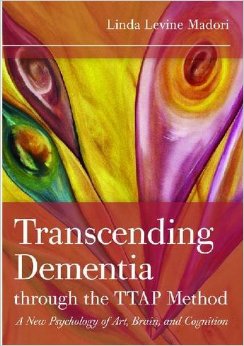 Publishers: Health Professions Press 2012 The brain-stimulating approach known as Therapeutic Thematic Arts Programming (TTAP) has a proven record of improving the lives of people with dementia by increasing their engagement and functioning. In Transforming Dementia through Therapeutic Thematic Arts Programming: A New Psychology of Art, the Brain, and Cognition you now have all the tools and instructions for putting this innovative and life-affirming approach to work in your own care setting. You too can successfully enervate the minds and hearts of people living with this challenging cognitive disease. Participation in the creative arts has been shown to promote cell growth that enhances the brain’s ability to learn and recall new information, create new ideas, and make new connections. Using 12 separate forms of creative expression — ranging from guided imagery to sculpture and painting to physical movement — TTAP builds on themes in an integrative way that helps each individual with dementia draw upon memories, feelings, and intellectual reserves that promote positive self-regard and active social participation. Sample activity protocols guide you through the process of engagement to help you quickly master the steps. Activities using the TTAP method can provide significant stimulation and integration of multiple brain regions enjoyment, engagement, creativity, relaxation, and a sense of purpose for people with even advanced dementia an easy-to-follow framework that allows infinite variations on themes and personal interests complete documentation for tracking and evaluation opportunities for one-on-one or group programming By blending the principles of art and therapeutic recreation with the latest findings in brain research, Transforming Dementia through Therapeutic Thematic Arts Programming presents an exciting new psychological taxonomy that captures the dynamic interplay between brain functioning and expressive and emotional stimulation. Testimonials from Healthcare AdministratorsNew York State Office on Aging Stated “ The TTAP Method is not only a “best practice approach” but it must be stated that this is the first “Active Treatment” method for caregivers and healthcare professionals. Erin Purcell, Program Director, Office on Aging, New York State,2012.Thanks to the implementation of the TTAP method, Bergen Regional Medical Center in New Jersey is now on the forefront in activities. Dr. Linda Madori’s “Transcending Dementia through the TTAP Method” has brought knowledge to the Therapeutic Recreation Staff which has been enhanced the residents’ quality of life at BRMC. I also recommend this book for families who have loved ones with Alzheimer’s disease. This book provides a new approach on how to deal with this disease and the benefits of using the TTAP method. Kristin Mullins, Director of Therapeutic Recreation, Bergen Regional Hospital, 2012“This book aligns with growing recognition that the same old same old no longer works in the face of the growing Alzheimer’s disease epidemic, and should help propel much-needed culture change. Just as Dr. Levine Madori notes that “the expressive arts are a powerful teaching tool,” so is her book. Its compelling blend of research and practical, hands-on skills opens up the world of creative arts to both professionals and family caregivers. By emphasizing what people with dementia can do, the strength-based, person-centered TTAP Method offers a positive approach to care—and, moreover, hope—at a critical time.” Carol Steinberg, Executive Vice President, Alzheimer’s Foundation of America and editor-in-chief of AFA’s care“Brilliant and must reading for practitioners today. This is an important clinical text for anyone engaging with Alzheimer’s patients. Dr. Madori has thoroughly researched her subject and made her case for the efficacy of the TAPP method. Family caregivers would also benefit greatly from instruction in this approach.” James Huysman, PsyD, LCSW, Author; Take Your Oxygen First"Inherent strengths of the publication include the author’s ability to share her expertise through numerous illustrations and examples; and the pedagogical features of the text – enumeration summaries of key points, figures support key narrative information, chapters are outlined and organized for quick reference and easy reading, and TTAP ideas are clearly presented and may be immediately incorporated into programming. The unique nature of the text is the presentation of creative arts with older adults – two minimized entities. Thus, this text fills a void in our professional literature as well as serving as a useful resource to several audiences." Marcia Jean Carter, Re.D., CPRP, CTRS, Associate Professor, Western Illinois University“Every administrator serving the healthcare industry recognizes the important balance between providing optimal care while keeping healthcare costs down. The TTAP Method has been proven here at Linden Oaks at Edward Hospital to do just that! All staff on our Gero- psychiatric unit received TTAP Method 2-day Certification Training and within 6 months aggressive behaviors’, and falls were significantly decreased. The hospital calculated a 160,000.00 savings in direct healthcare costs after the first year! We highly recommend reading Dr. Levine Madori’s first book The TTAP Method and her new book Transcending Dementia through the TTAP Method; A New Psychological Approach to Art, Brain and Cognition.” Trish Jones-Bendel Chief Administrator, Linden Oaks at Edward Hospital, Chicago, Ill.
Publishers: Health Professions Press 2012 The brain-stimulating approach known as Therapeutic Thematic Arts Programming (TTAP) has a proven record of improving the lives of people with dementia by increasing their engagement and functioning. In Transforming Dementia through Therapeutic Thematic Arts Programming: A New Psychology of Art, the Brain, and Cognition you now have all the tools and instructions for putting this innovative and life-affirming approach to work in your own care setting. You too can successfully enervate the minds and hearts of people living with this challenging cognitive disease. Participation in the creative arts has been shown to promote cell growth that enhances the brain’s ability to learn and recall new information, create new ideas, and make new connections. Using 12 separate forms of creative expression — ranging from guided imagery to sculpture and painting to physical movement — TTAP builds on themes in an integrative way that helps each individual with dementia draw upon memories, feelings, and intellectual reserves that promote positive self-regard and active social participation. Sample activity protocols guide you through the process of engagement to help you quickly master the steps. Activities using the TTAP method can provide significant stimulation and integration of multiple brain regions enjoyment, engagement, creativity, relaxation, and a sense of purpose for people with even advanced dementia an easy-to-follow framework that allows infinite variations on themes and personal interests complete documentation for tracking and evaluation opportunities for one-on-one or group programming By blending the principles of art and therapeutic recreation with the latest findings in brain research, Transforming Dementia through Therapeutic Thematic Arts Programming presents an exciting new psychological taxonomy that captures the dynamic interplay between brain functioning and expressive and emotional stimulation. Testimonials from Healthcare AdministratorsNew York State Office on Aging Stated “ The TTAP Method is not only a “best practice approach” but it must be stated that this is the first “Active Treatment” method for caregivers and healthcare professionals. Erin Purcell, Program Director, Office on Aging, New York State,2012.Thanks to the implementation of the TTAP method, Bergen Regional Medical Center in New Jersey is now on the forefront in activities. Dr. Linda Madori’s “Transcending Dementia through the TTAP Method” has brought knowledge to the Therapeutic Recreation Staff which has been enhanced the residents’ quality of life at BRMC. I also recommend this book for families who have loved ones with Alzheimer’s disease. This book provides a new approach on how to deal with this disease and the benefits of using the TTAP method. Kristin Mullins, Director of Therapeutic Recreation, Bergen Regional Hospital, 2012“This book aligns with growing recognition that the same old same old no longer works in the face of the growing Alzheimer’s disease epidemic, and should help propel much-needed culture change. Just as Dr. Levine Madori notes that “the expressive arts are a powerful teaching tool,” so is her book. Its compelling blend of research and practical, hands-on skills opens up the world of creative arts to both professionals and family caregivers. By emphasizing what people with dementia can do, the strength-based, person-centered TTAP Method offers a positive approach to care—and, moreover, hope—at a critical time.” Carol Steinberg, Executive Vice President, Alzheimer’s Foundation of America and editor-in-chief of AFA’s care“Brilliant and must reading for practitioners today. This is an important clinical text for anyone engaging with Alzheimer’s patients. Dr. Madori has thoroughly researched her subject and made her case for the efficacy of the TAPP method. Family caregivers would also benefit greatly from instruction in this approach.” James Huysman, PsyD, LCSW, Author; Take Your Oxygen First"Inherent strengths of the publication include the author’s ability to share her expertise through numerous illustrations and examples; and the pedagogical features of the text – enumeration summaries of key points, figures support key narrative information, chapters are outlined and organized for quick reference and easy reading, and TTAP ideas are clearly presented and may be immediately incorporated into programming. The unique nature of the text is the presentation of creative arts with older adults – two minimized entities. Thus, this text fills a void in our professional literature as well as serving as a useful resource to several audiences." Marcia Jean Carter, Re.D., CPRP, CTRS, Associate Professor, Western Illinois University“Every administrator serving the healthcare industry recognizes the important balance between providing optimal care while keeping healthcare costs down. The TTAP Method has been proven here at Linden Oaks at Edward Hospital to do just that! All staff on our Gero- psychiatric unit received TTAP Method 2-day Certification Training and within 6 months aggressive behaviors’, and falls were significantly decreased. The hospital calculated a 160,000.00 savings in direct healthcare costs after the first year! We highly recommend reading Dr. Levine Madori’s first book The TTAP Method and her new book Transcending Dementia through the TTAP Method; A New Psychological Approach to Art, Brain and Cognition.” Trish Jones-Bendel Chief Administrator, Linden Oaks at Edward Hospital, Chicago, Ill. -
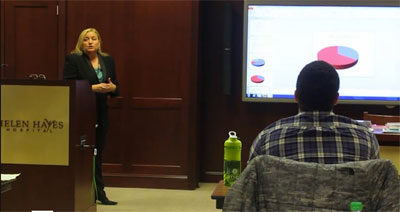 SPECIAL OFFER: Buy all 6 videos together and use coupon code "TTAP" to get all six for $100.00 CHAPTER FIVE: RESEARCH ON TTAP METHOD© 119 TTAP and Research Research Variables TTAP Types of research Art/Health Diamond Types of Social Science Research Pre-post testing Data Analysis Publishing efficacy research Research Documentation and Protocols Study 1-Cornell University study 14 week research on TTAP Study 2-Effect of TTAP on Cognitive Performance in Hispanic Population Study 3- Edward Hospital 2011-12 and 2013 -13
SPECIAL OFFER: Buy all 6 videos together and use coupon code "TTAP" to get all six for $100.00 CHAPTER FIVE: RESEARCH ON TTAP METHOD© 119 TTAP and Research Research Variables TTAP Types of research Art/Health Diamond Types of Social Science Research Pre-post testing Data Analysis Publishing efficacy research Research Documentation and Protocols Study 1-Cornell University study 14 week research on TTAP Study 2-Effect of TTAP on Cognitive Performance in Hispanic Population Study 3- Edward Hospital 2011-12 and 2013 -13
